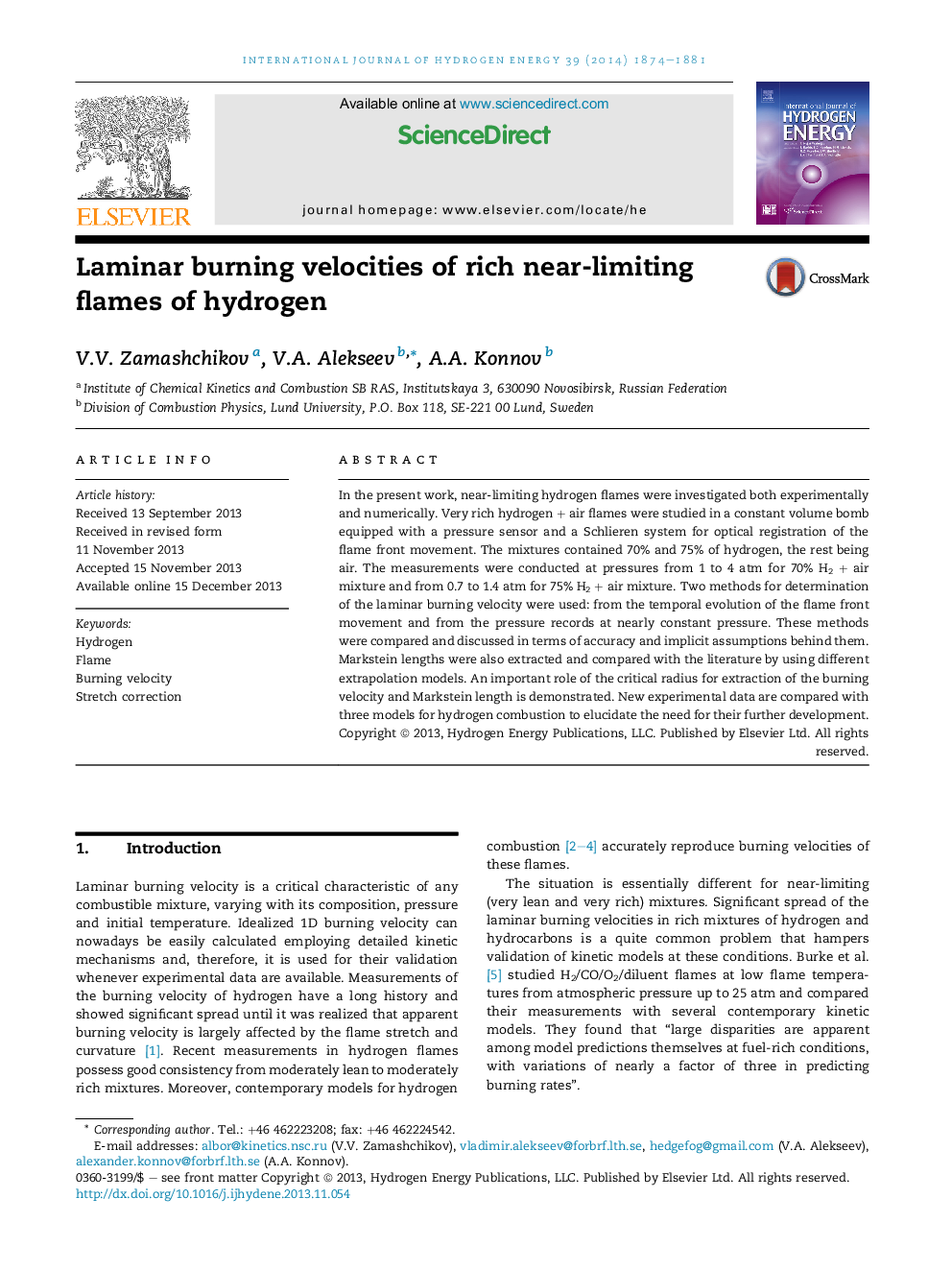| Article ID | Journal | Published Year | Pages | File Type |
|---|---|---|---|---|
| 7720885 | International Journal of Hydrogen Energy | 2014 | 8 Pages |
Abstract
In the present work, near-limiting hydrogen flames were investigated both experimentally and numerically. Very rich hydrogen + air flames were studied in a constant volume bomb equipped with a pressure sensor and a Schlieren system for optical registration of the flame front movement. The mixtures contained 70% and 75% of hydrogen, the rest being air. The measurements were conducted at pressures from 1 to 4 atm for 70% H2 + air mixture and from 0.7 to 1.4 atm for 75% H2 + air mixture. Two methods for determination of the laminar burning velocity were used: from the temporal evolution of the flame front movement and from the pressure records at nearly constant pressure. These methods were compared and discussed in terms of accuracy and implicit assumptions behind them. Markstein lengths were also extracted and compared with the literature by using different extrapolation models. An important role of the critical radius for extraction of the burning velocity and Markstein length is demonstrated. New experimental data are compared with three models for hydrogen combustion to elucidate the need for their further development.
Keywords
Related Topics
Physical Sciences and Engineering
Chemistry
Electrochemistry
Authors
V.V. Zamashchikov, V.A. Alekseev, A.A. Konnov,
